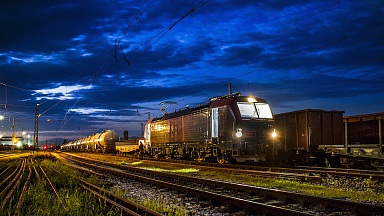At the second meeting of the CIS Transport Business Dialogue, which was held in late January, experts stated that Russia plans to play a significant role in the development of two important transport corridors, which are linked directly to the international North—South transport corridor. These corridors are:
1. The Multimodal Route «Kabul Corridor» (Termez — Naibabad — Logar — Kharlachi) — a route from Uzbekistan through the capital of Afghanistan, providing access to Pakistan.
2. The China — Kyrgyzstan — Uzbekistan Corridor (CKU) (Kashgar — Torugart — Arpa — Makmal — Jalalabad) — another route that runs from China through Kyrgyzstan to Uzbekistan.
Both of these corridors currently operate in a multimodal mode, which means that they combine road and rail transportation. However, with further railway construction projects being implemented on these routes, cargo flows between the countries involved could increase significantly, according to experts.
The main reason for progress will be a reduction in travel time, delivery times, and, most importantly, the cost of transporting goods between countries in North-Eastern Europe, Russia, China, and South and Southeast Asia, as well as between China and Southern Europe via Central Asia.
Both the Kabul Corridor and the CKU route cross the territory of Uzbekistan. This will in the future help to increase the country’s export of transport and logistics services. New projects to develop railway and road lines will compensate for the lack of mainline infrastructure in Central Asia, which other countries are also interested in.
When will the CKU railway be built?
At one point, this projected railroad route was famously referred to as the overland Suez Canal, as it would link East and West in the quickest and most lucrative way possible. Specifically, the journey from China to southern Europe will be shortened by 900 kilometers, and goods will arrive in as little as one week. Right now, the average time it takes for container cargo to travel from China to Europe via sea is between 15 and 30 days.
The new railroad route will begin in Chinese Kashgar. Then, the path will run through the difficult Torugart Pass with access via Kyrgyz Arpa, Makmal, and Jalalabad to the Uzbekistan station Savai.
According to the National Investment Agency of the Republic of Kyrgyzstan, the construction of a Kyrgyzstan—China—Uzbekistan rail link is expected to start in 2024. According to Uzbekistan’s Ministry of Investment and Trade, the parties currently have preliminarily agreed upon a 486-mile railroad route.
The «Kabul Corridor»
The Termez—Naibabad—Logar—Kharlachi railway project, which will provide access to the Pakistani seaports of Karachi and Kasmir, will connect the entire Eurasian railway system to the South Asian system through Afghanistan and help increase the transit potential of Central Asia. This project will also attract cargo flows and revive the historical role of this region as the crossroads of the Great Silk Road.
By creating a unified railway infrastructure between the EU, the CIS, China, and countries in South and Southeast Asia (such as Afghanistan, Pakistan, India, and Bangladesh), the project will allow for speedy transportation of goods along a new North—South corridor, connecting the largest markets and creating unique opportunities for Afghanistan. Large transit flows will be created, up to 20 million tons per year by 2030.


